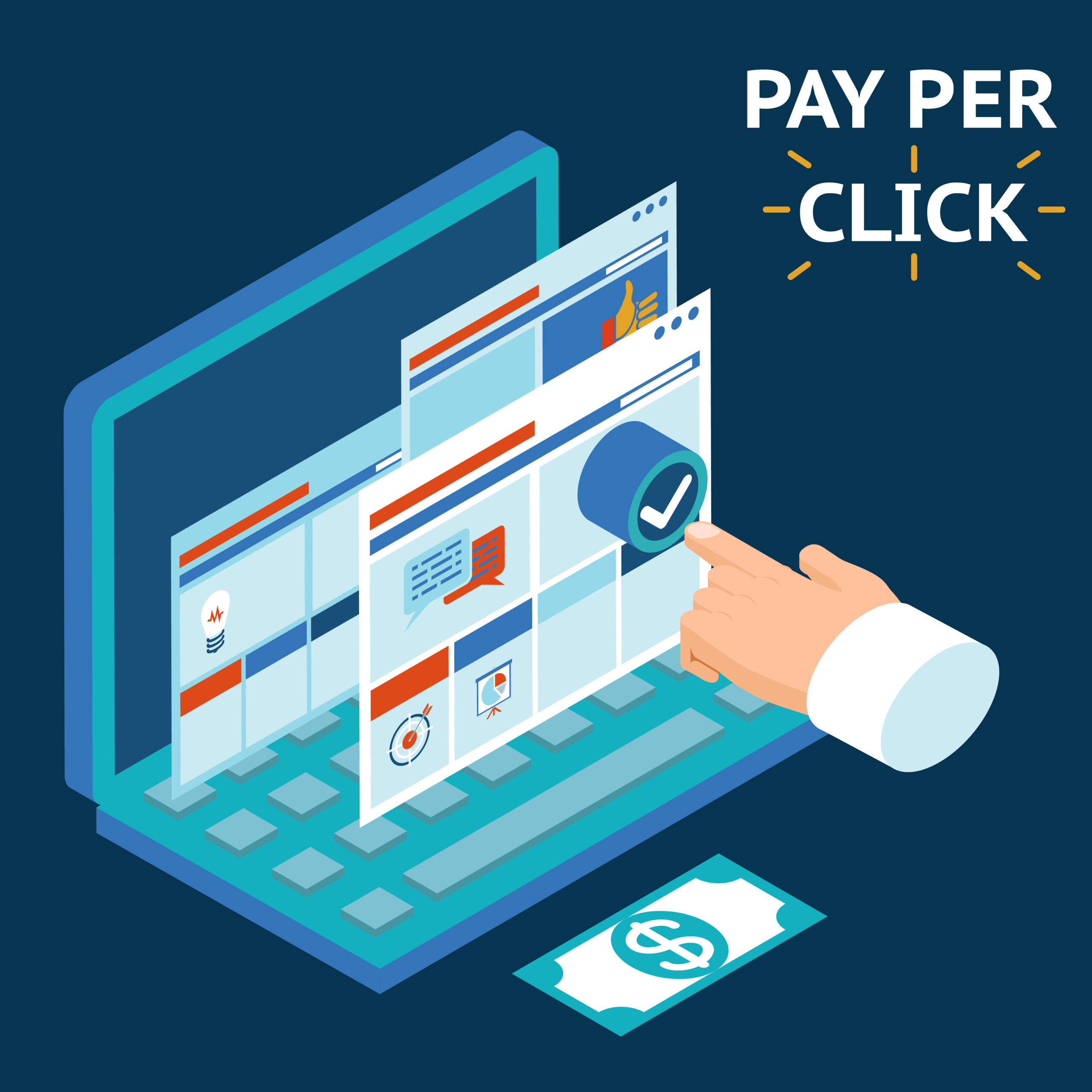What are Pay-Per-Click Strategies?
PPC (pay-per-click) is an online advertising system in which someone places a business’s ads online. With Pay Per Click strategies, you spend money only when someone clicks your ad and visits your landing page. In simple words, no click means no cost.
The main purpose of Pay-Per-Click strategies is to show ads only to people who are likely to be interested in them at the right time. This way, your money isn’t wasted on random views where there’s no interest. The budget only goes to users who have a higher chance of being interested.
A good strategy includes choosing proper keywords, setting the correct target audience, and writing clear ad text. Along with this, a useful landing page is needed so visitors can find what they expect after clicking. Regular adjustments also keep the campaign effective while it is running. By following these methods, businesses can reduce extra costs, get more useful clicks, improve sales, and achieve better results from their ads.


How its work
Pay-Per-Click strategies help your ads reach the right audience when they’re actually searching. This saves your budget from going to random clicks. The process is simple and works step by step.
- Keyword Analysis
- Target Audience
- Ad Copy & Design
- Landing Page Optimization
- Budget & Bidding
- Tracking & Improvement
Benefits of Pay-Per-Click Strategies
Pay-Per-Click strategies are useful because they start giving results very fast. The moment you launch an ad, it shows on Google, and people can reach your website instantly. It is not like SEO, where you wait for months; here, you see quick action. These strategies also give you the option to choose who should see your ad, like by city, age, or their interest. This makes it easier to reach people who may actually need your product.
Pay-Per-Click Strategies in Digital Marketing
If you want people to notice your business online, ads are one of the fastest ways to do it. SEO is important, but it takes months to show results. With Pay-Per-Click (PPC) ads, you can appear on Google almost instantly. The only problem is that if you don’t plan well, your money can disappear very fast. That’s why using the right pay-per-click strategies is so important. In this post, we’ll look at 10 simple and effective ways to make your PPC campaigns work better.
Let’s look at the top 10 methods that can help you get better clicks, higher conversions, and maximum returns.
1. Keyword Research and Optimization
Every PPC campaign begins with keywords, and that makes keyword research one of the most important pay-per-click strategies. The goal is simple — use words that match what your customers are actually typing into Google. Long-tail keywords such as “best coffee shop near me” or “affordable digital marketing services” bring more qualified clicks than broad, generic terms. Don’t forget negative keywords either — they stop irrelevant clicks and save your budget.
2. Writing Ad Copy That Feels Human
When it comes to pay-per-click strategies, ad copy is like the voice of your ad. You know how sometimes a single catchy line grabs your attention on a billboard? Online ads work the same way. A headline like “Book a Free Trial Today” feels way more exciting than something plain like “We Offer Services.” And here’s the thing — whatever promise you make in the ad, repeat it on the landing page. People trust consistency, and trust makes them click.
3. Reaching the Right Audience
Not every click is valuable. Smart pay-per-click Strategies ads are only visible to people who can take a quick action, such as buying or clicking. If you have a bakery in Delhi, then showing ads to people in Mumbai won’t really work. Better is to keep ads only for people who can actually come to your shop. Use things like location, age, or device filters so ads reach the right crowd.
4. Making Landing Pages User-Friendly
Here’s a mistake many businesses make: they spend on ads but forget the page people land on. One of the most practical pay-per-click strategies is to ensure that the page feels fast, clean, and trustworthy. Think about it — if someone clicks an ad and lands on a confusing or slow website, they’ll leave instantly. But if the page loads quickly, has a clear button like “Book Appointment,” and shows reviews or trust badges, the chances of conversion shoot up.
5. Adding Extra Details with Ad Extensions
Even small changes can yield big results, which is why using ad extensions is so important. They let you add extra information, such as a phone number, a call button, or even sitelinks to different pages of your site. Imagine searching for a doctor and immediately seeing the option to “Call Now” or “Get Directions” in the ad itself — wouldn’t you be more likely to click? Extensions make your ads stand out and give users more reasons to engage.
6. Bringing Back Visitors with Remarketing
Here’s a simple truth: most people don’t buy or sign up the first time they visit a site. Remarketing is one of those pay-per-click strategies that brings them back. Let’s say someone checked out your online store and left without completing the purchase. A gentle reminder ad like “Still thinking? Complete your order today with free shipping” can make them return. It feels personal and often works better than chasing new visitors every time.
7. Geo-Targeting and Local PPC
Local businesses often waste money by targeting too widely. A smarter move is to apply geo-targeting. This is one of those pay-per-click strategies that can dramatically increase ROI. If you run a café in Delhi, there’s no point showing ads to users in Bangalore. Restrict your ads to a small radius around your location and include local keywords such as near me.


8. Testing Ads Like a Real Experiment
One of the most practical pay-per-click strategies is testing. Think of it as a small science experiment. You put out two ads — maybe one says “Order Now” and the other says “Grab Yours Today.” After a week, you check which one brought more clicks. Simple, right? The point is not to guess but to let people’s behavior guide you. Sometimes, even a single word or color change can surprise you with better results.
9. Spending Money the Smart Way
Money goes fast in PPC if you’re not careful. That’s why one of the most important pay-per-click strategies is to control how much you spend. Don’t put all your money on day one. Test a small budget first, see which ad is giving better results, and then increase only on that. Think of it like tasting food before adding more salt — once you know it works, then add more. This way, you protect your budget and still grow your campaign.
10. Checking Results and Making Adjustments
Running ads without checking results is like driving without looking at the road. Tracking is a must in all pay-per-click strategies. Watch your clicks, conversions, and cost per lead. If an ad isn’t giving results, just pause it. If another is doing well, put more focus there. It’s a simple cycle: try, check, improve, repeat. That’s how PPC keeps getting better over time.
Real-Life Example of PPC Success
The real power of pay-per-click strategies is best seen in practice. The main purpose of Pay-Per-Click strategies is to show ads only to people who are likely to be interested in them at the right time. This way, your money isn’t wasted on random views where there’s no interest. The budget only goes to users who have a higher chance of being interested.
Types of PPC Campaigns You Can Run
Every business requires a different approach, and that’s where Campaigns makes the difference. Here are some common PPC campaign types:
- Search Ads → Show on Google search results.
- Display Ads → Visual ads on websites.
- Shopping Ads → Perfect for eCommerce with product price and reviews.
- Video Ads: Your product or brand video will appear online, etc.
Recent PPC Updates:
Utilize more video, automation, shoppable, and influencer ads, and continually update what works.
- AI-powered bidding for smarter budget use.
- Voice search optimization for “near me” and question-style searches.
- Video PPC ads for higher engagement.
- Hyper-personalization based on user behavior.
Common PPC Myths You Should Ignore
Many people avoid PPC because of myths. Let’s clear a few:
- PPC is only for big companies → In reality, small businesses with smart pay-per-click strategies can do really well.
- Set it once and forget it → PPC needs constant monitoring.
- PPC is too expensive → If you optimize properly, it can be very budget-friendly.
Conclusion
In the end, PPC is just about making smart moves, you know. It’s not like you need a huge budget—just spend where it actually matters. Try a couple of ads, see which ones actually bring people, and keep using those. Small changes here and there can also give better results. Slowly, this way helps your business grow without throwing money away.
You can also read:

